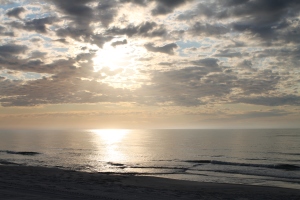
E.O. Wilson reigns in my mind as our most important scientist-author of our time. He is University Research Professor Emeritus at Harvard. Wilson has two Putlizer’s under his belt, for On Human Nature (1979) and The Ants with Bert Holldobler (1991).
The adjacent photo is from Nature and Culture International: Board of Directors, one of many organizations E.O. Wilson serves with his visionary gifts.
He has penned dozens more books that have stayed on the New York Times Bestseller lists over decades of his career. He writes for the public as well as scientific community. If you have never read anything by Wilson, I recommend The Diversity of Life as a starting point. While published first in 1992, it is still relevant to understand the diversity of life across the planet, and – most important – the conservation areas that Wilson recommends must be preserved for the healthy functioning of the biosphere.
But, my reason for this post is to review his recent book, The Meaning of Human Existence (2014). Why is it important to read? He is most likely the most erudite scientist writing for the public today. His understanding of who we are as a species and society is informed by his comprehensive grasp of our genetic inheritance, the dynamics of sociobiology – how we function as a group – and the challenges to our existence in the near and distant future. Yes, it IS that significant.
The book calls for the reunification of the humanities with science. Wilson argues that the current separation of these two great ways of knowing our human nature, is at the crux of our possible self-destruction by lack of understanding our roots in nature. He explains the most basic evolutionary path leading to our essential human nature: our dualistic nature, usually ascribed to the humanities to explain.
Wilson shows us how our “selfish” genes and “altruistic” genes evolved, and how they work in a multilevel natural selection. This is relevant in understanding why we do what we do, predicting the kinds of decisions we will probably make, and – once understanding this – how we could use this knowledge to make critical decisions about new technologies that may doom human existence or secure our continued success into the future.
The Threat of Gene Engineering of Human Beings
He is writing about the new potential to design our own genetic endowment – design humans like we want them. This can also be applied to new threats from artificial intelligence (AI), a topic he does not address in this book, but which occurred to me as I read the book during a time when the nation is discussing the challenges inherent in AI development.
If we do not understand, who we are, and know how to understand our behavior, how can we possibly make these new, complex ethical decisions? Wilson writes that religion, which introduces a supernatural being who is in control of humans and the universe, is an outdated way of knowing that currently blocks human society’s ability to understand how the world works and based on that, to make the collective decisions we need to determine to secure that human life on earth will go forward as we know it.
What do you think about that? Does religion prevent us from knowing who we are biologically? How can we bridge the gap between these two powerful ways of knowing our story on Earth? Please comment so that we can discuss this online.




